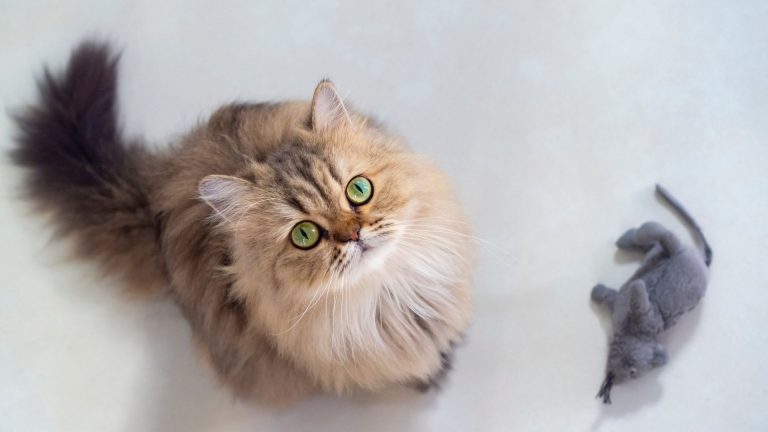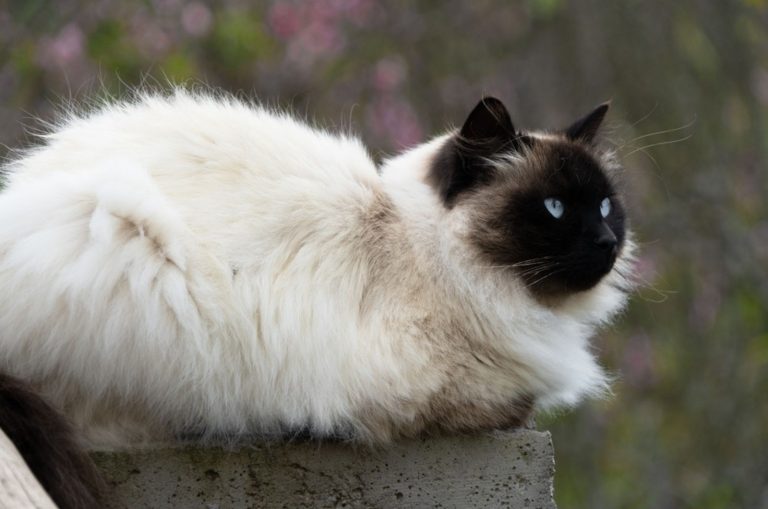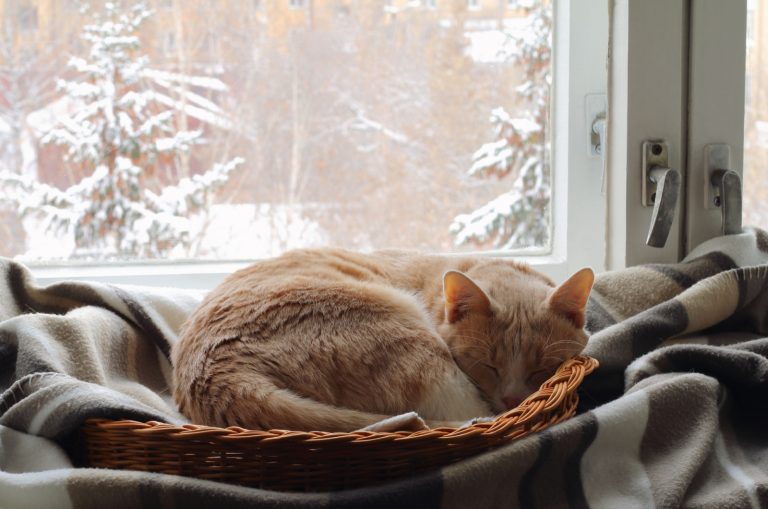Rodent Ulcers In Cats: Causes, Treatment, And Prognosis
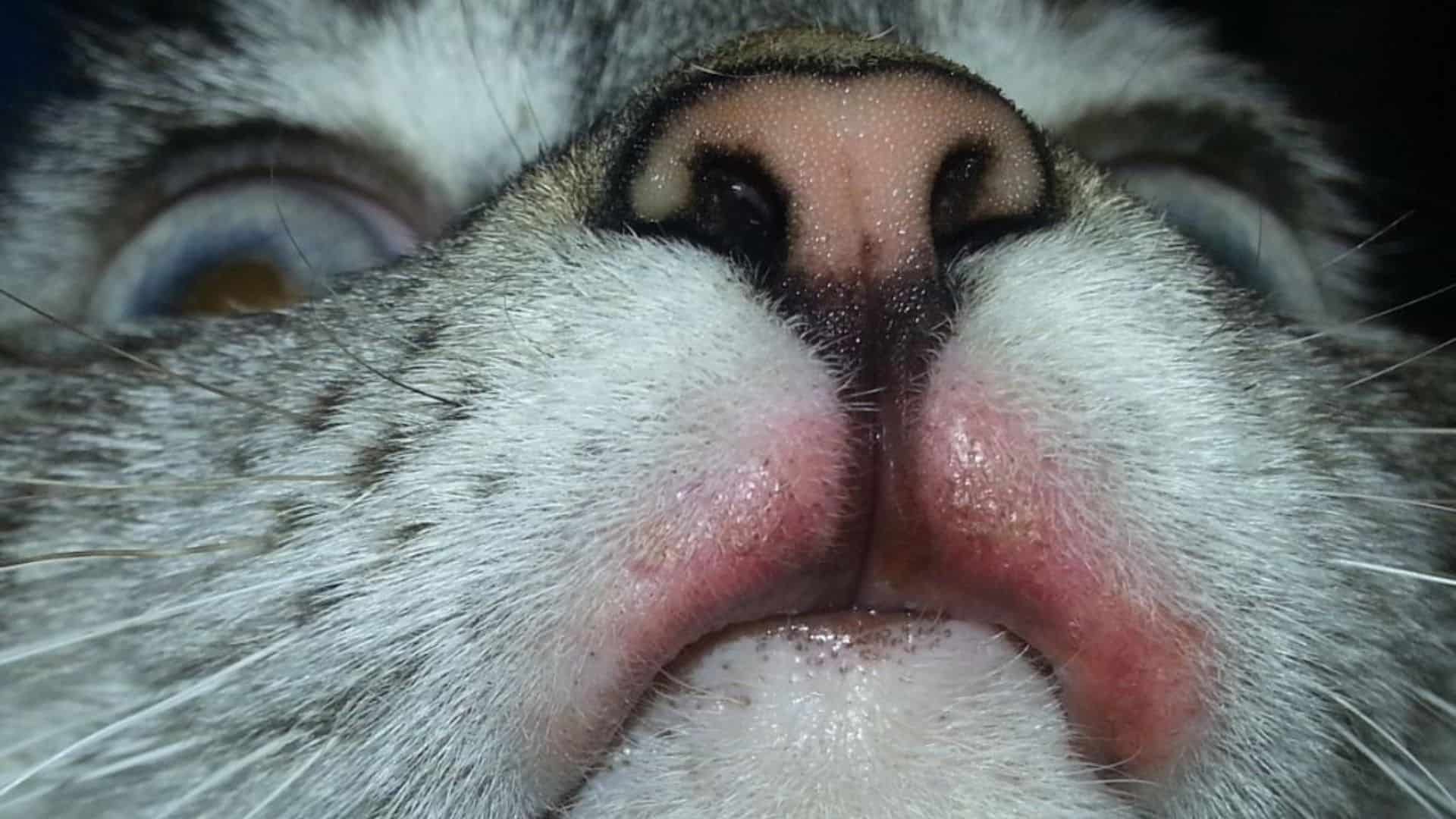
Rodent ulcers in cats are unpleasant sores most commonly found on a cats’ upper lip, however, they may develop on other sites on the cat’s body. Although they’re usually not that painful, they sure look painful and cause many cat owners to worry.
The name “rodent ulcers” is misleading, as it has nothing to do with rodents! I will explain the origin of the name further below; however, I wanted to point this out immediately.
If you’ve noticed your cat has mysteriously developed a red sore around the lips, chin, or inside the mouth and you suspect it’s rodent ulcers, read on to learn what is causing it, how it’s diagnosed and treated, as well as the prognosis for cats battling rodent ulcers.
What Are Rodent Ulcers In Cats?
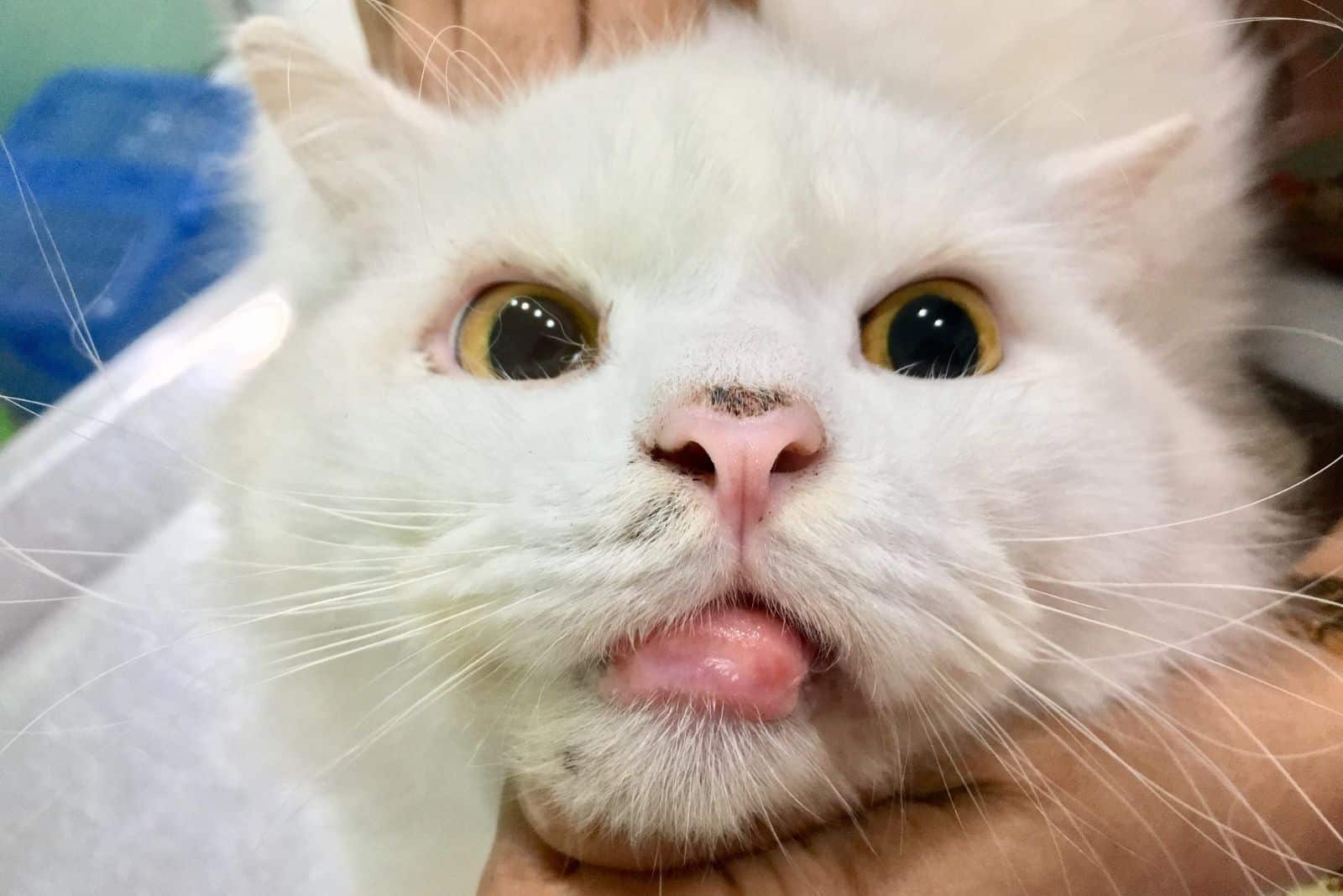
Rodent ulcers, otherwise known as indolent ulcers, are lesions that belong to the family of skin diseases called the eosinophilic granuloma complex, which I will cover in a second.
Rodent ulcers are lesions that usually appear on the upper lip, although they can appear on the bottom lip, chin, tongue, inside the mouth, and rarely on other parts of the cat’s body.
At first, these ulcers look like a mild thickening of the lip but then progress into a more severe form as the cat starts licking it. If a cat has an ulcer on the bottom lip, it looks as if the cat is sticking its tongue out all the time.
If rodent ulcers are left untreated and do not eventually go away, they may spread to more of the affected cat’s upper lip and lead to more obvious lip disfigurement.
Most rodent ulcers are not painful and go away on their own after a few weeks or months. However, some lesions may be present for a long time. An affected cat may become less hungry due to this discomfort, which could lead to weight loss and physical weakness.
Rodent ulcers do not have a breed predisposition; however, younger female cats are more prone to developing these ulcers.
What Is Feline Eosinophilic Granuloma Complex?
As I’ve mentioned, rodent ulcers (or indolent ulcers) belong to the family of feline skin lesions named the eosinophilic granuloma complex (EGC). Within this family, there are:
• the indolent ulcers (rodent ulcers),
• the eosinophilic plaques,
• the eosinophilic granuloma.
All three skin lesions are inflammatory lesions, meaning all three show high eosinophil activity (a type of white blood cell). They all respond to the same treatment and might have the same cause (an allergy).
Cats lick the region, causing a sore, because the eosinophils emit inflammatory chemicals improperly, causing an itchy sensation. Eosinophils are part of the immune system’s battle against allergen, suggesting that the most probable cause of these ulcers are allergies.
Use The Term Indolent Ulcers, Not Rodent Ulcers
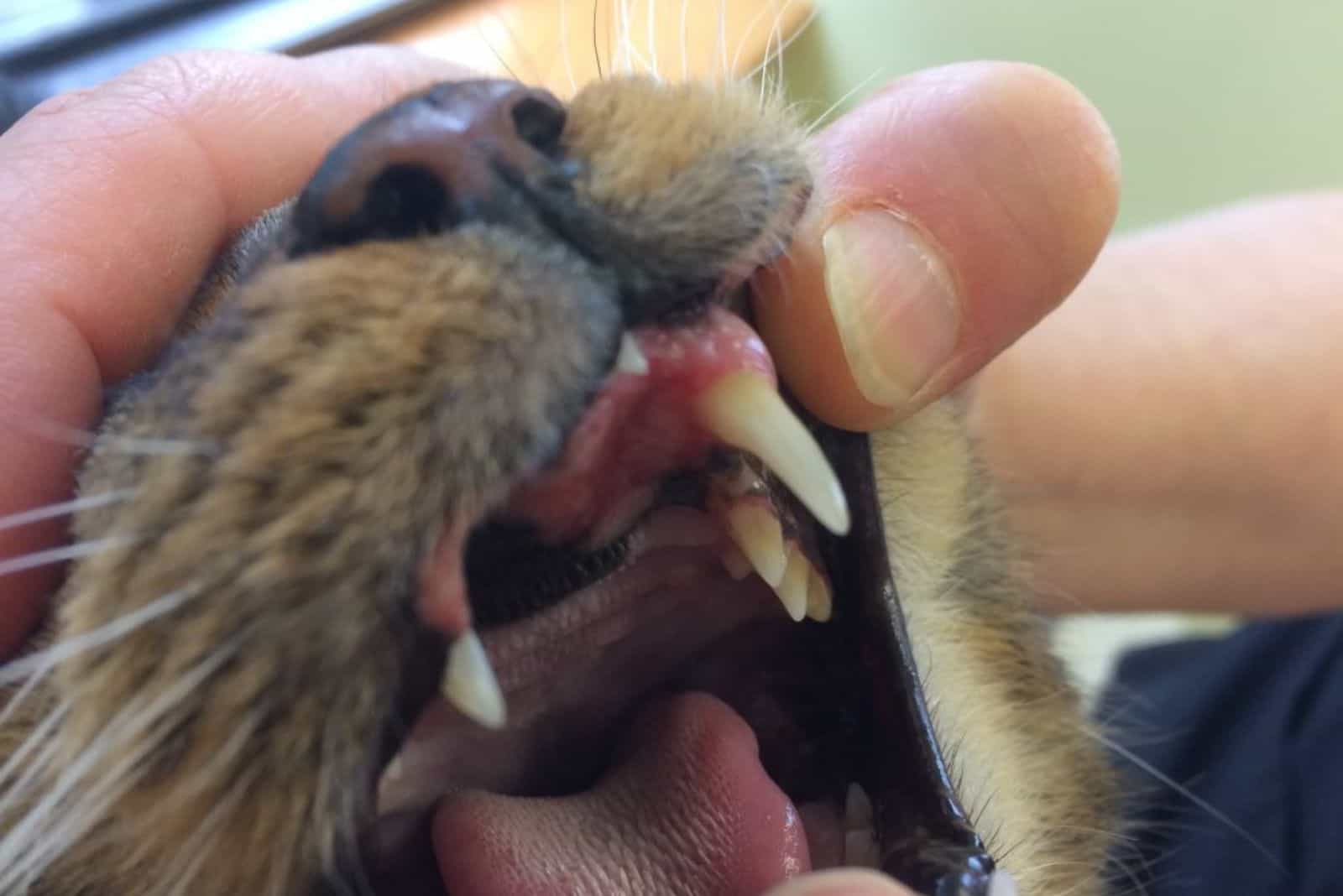
Using the term rodent ulcers is not recommended, as it’s technically incorrect. It’s better to use the term feline indolent ulcers.
Rodent ulcer in humans is a type of skin cancer (basal cell carcinoma); therefore, many prefer using the term indolent ulcers when discussing felines and their inflammatory lesions. Apart from this, the term rodent ulcers is misleading.
The term “rodent ulcer” refers to the belief that these cat mouth ulcers were brought on by a rodent bite or an infection contracted from a rodent.
Now we know this is not true and that there are other causes of these skin lesions, and not a rodent bite. Rodent ulcers are the most appealing word for a medical ailment, especially as they are frequently brought on by an allergic reaction to fleas, food, or other environmental factors.
However, when they occur on the lips, the distorted lip can make the front teeth seem to protrude, resembling the mouth of a rat, so the term rodent ulcers has stuck around.
Causes Of Indolent Ulcers In Cats
In most cases, the primary cause of indolent ulcers in cats is never identified.
An indolent ulcer’s most likely underlying cause is hypersensitivity (allergies). The most typical one is a cat’s allergy to flea saliva. Although less frequent, food allergy, nonfood allergy, or hypersensitivity to mosquito, mite, or flea bites could be the root of the problem.
Systemic reactions to drugs, such as antibiotics, cardiac medicines, and a range of airborne pollen, are additional potential causes.
Most of the time, veterinarians and veterinary dermatologists assume allergies are the cause of a cat’s lip ulcers, especially if there are other clinical signs of feline allergies.
In many cases, you may never know the cause. Most frequently, the underlying cause of cats’ indolent ulcers is never identified.
Diagnosis Of Indolent Ulcers In Cats
Diagnosis of indolent ulcers might entail the following:
• review of the cat’s medical history,
• physical examination,
• cytological examination of the lesion (searching for signs of eosinophils and bacterial infection),
• biopsy (to rule out neoplasia).
A comprehensive physical examination, a study of the cat’s medical history, and a look for external parasites on its skin and coat are usually required for the diagnosis. A skin biopsy may occasionally be necessary.
You can infer the cause of indolent ulcers if the lesion arises in the summer when there are many mosquitoes around. This would indicate hypersensitivity to mosquito bites.
Once the confirmative diagnosis has been made, the veterinarian will decide how to approach treating the indolent ulcers.
Treatment Of Indolent Ulcers In Cats

Depending on the cause, indolent ulcers may require different treatments. For example, treating ulcers caused by food allergies is not the same as treating ulcers caused by hypersensitivity to flea bites.
However, most of the time, veterinarians cannot determine what caused the cat’s indolent ulcers. In this case, they usually assume the cause is hypersensitivity to a particular allergen and adjust the treatment plan accordingly.
It’s important to note that these skin lesions must be treated as soon as possible. The ulcer can cause significant damage to the upper lip (or any other site they can be found) if left untreated.
1. Flea Treatment
Flea control is a straightforward, successful therapy choice for flea-allergic cats because it has been demonstrated that indolent ulcers can result from hypersensitivity to flea bites.
2. Steroids
Steroids are usually needed for indolent ulcer treatment.
It is common for a vet to administer a long-acting steroid injection. If it is necessary to repeat the treatment in a few weeks, it is safer and better for the owner to attempt to administer oral steroids.
Prednisone (glucocorticoid, a prodrug to prednisolone) and cyclosporine (better known for its brand name Atopica) are cat-safe corticosteroids.
3. Hypoallergenic Diet
Some cats respond to hypoallergenic or elimination diets, which may indicate that a food allergy is to blame.
Food that doesn’t include components that are recognized as cat allergies is referred to as hypoallergenic cat food. Instead, these diets only include substances that are unlikely to cause allergies.
A single protein source, such as lamb, duck, or venison, is present in hypoallergenic cat food, and the diet also has a negligibly small quantity of fiber.
Your veterinarian can also assist you in creating a custom hypoallergenic cat food diet that is appropriate for your cat.
4. Antibiotics
A cytological test might indicate a bacterial involvement in the lesion, in which case antibiotic medication may be started for three to four weeks. Antibacterial therapy has reportedly been the only treatment for some cats.
Prognosis For Cats With Indolent Ulcers
The prognosis for a cat with indolent ulcers depends if the underlying cause of the ulcers’ development is found. If the cause is found and successfully treated, then the cat’s prognosis is very good.
Cats may only experience one rodent ulcer in their lifetime, or it may be chronic.
Cats with recurrent lesions for which there is no identifiable underlying cause typically need long-term medication therapy to keep the lesions in remission. These cats have a worse prognosis since medical treatment may cause them to become resistant to it or cause unacceptable adverse side effects.
Depending on the severity and response to therapy, the prognosis for a cat with an underlying condition varies.
FAQ
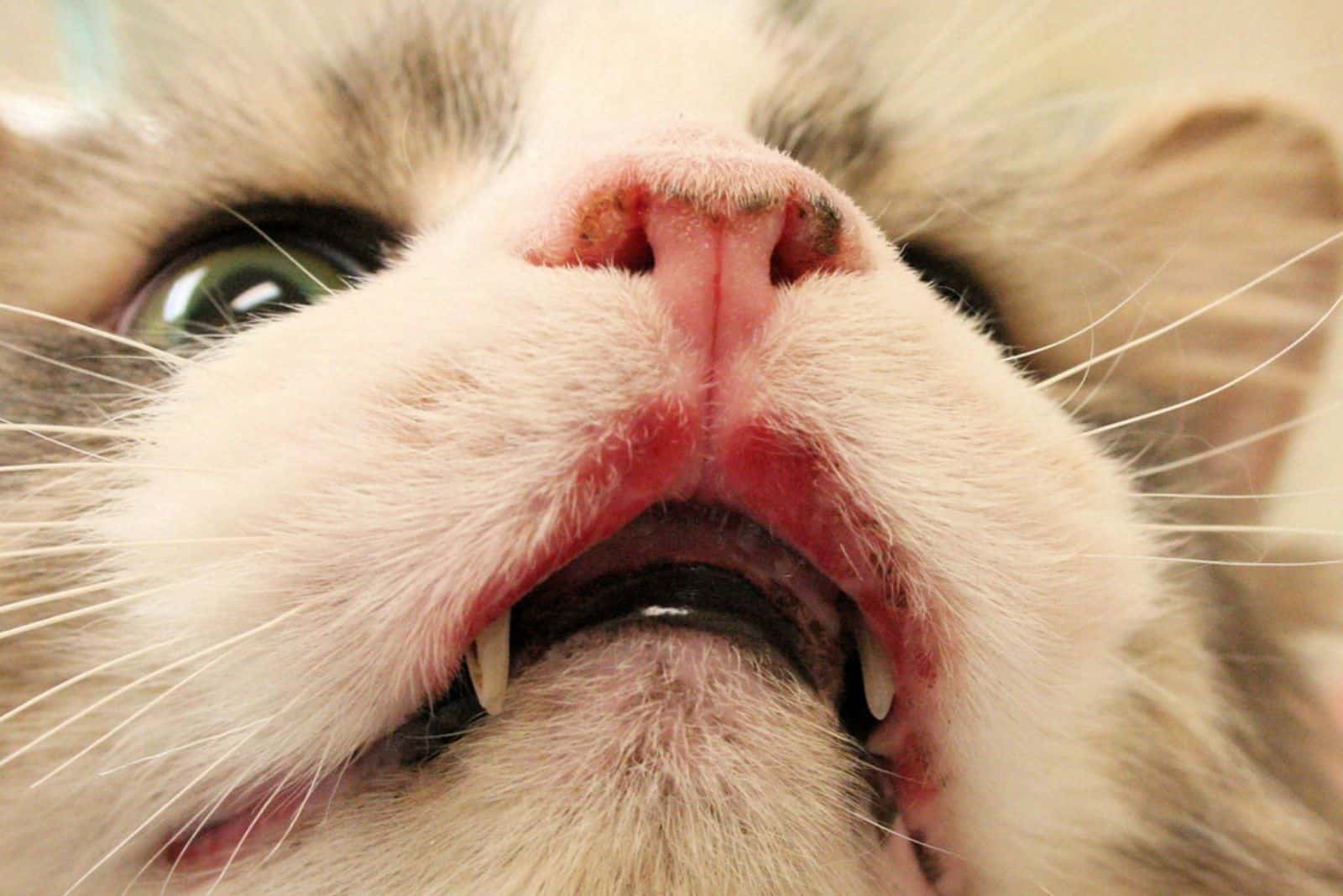
What Does A Rodent Ulcer Look Like In Cats?
Rodent ulcers, or indolent ulcers, are red sores with clear, raised boundaries, usually found on a cat’s upper lip. If it’s located on the bottom lip, it has a distinct appearance, as if the cat’s always sticking its tongue out.
How Do Rodent Ulcers In Cats Get Transmitted?
Rodent ulcers in cats are not transmissible. They’re caused by a cat’s hypersensitivity to a particular allergen, such as a flea bite or a protein from food.
What Is The Most Common Cause Of Rodent Ulcers In Cats?
The most common cause of rodent ulcers in cats are allergic reactions to a specific allergen. However, most of the time, the cause of feline rodent ulcers cannot be determined. Apart from allergies, there are other potential causes of rodent ulcers; however, more research needs to be done regarding this topic.
Will A Cat Rodent Ulcer Go Away On Its Own?
It is possible for rodent ulcers to go away on their own. There are cases where a cat develops rodent ulcers, they go away on their own, and they never appear again. On the other hand, if the ulcers are severe, the cat needs treatment. Otherwise, the sores can lead to permanent lip disfigurement.
In Conclusion
Rodent ulcers in cats are unpleasant lesions usually found on a cat’s upper lip; however, they can be found on other sites too, such as the bottom lip, chin, inside the mouth, tongue, and other sites on the body.
Although they’re usually not painful, they are unpleasant and can lead to lip disfigurement if left untreated.
The term rodent ulcers is technically incorrect, and it’s recommended to call them indolent ulcers, as the term rodent ulcer is misleading (there are no rodents involved in the onset of the sore), and it’s also a name for a human cancer.
The most possible causes of these sores is hypersensitivity to different allergens, such as insect bites and food allergies. Therefore, the first treatment option is to treat any flea infestation and then put the cat on a strict diet with no food allergens.
If you suspect your cat has indolent ulcers, you should visit a vet and get your cat examined. If the vet diagnoses your cat with a case of indolent ulcers, they will explain the treatment process. And don’t worry; your cat’s health will be in order very soon!
Related Articles:
How To Deal With Cat Teeth Tartar And Other Dental Diseases

